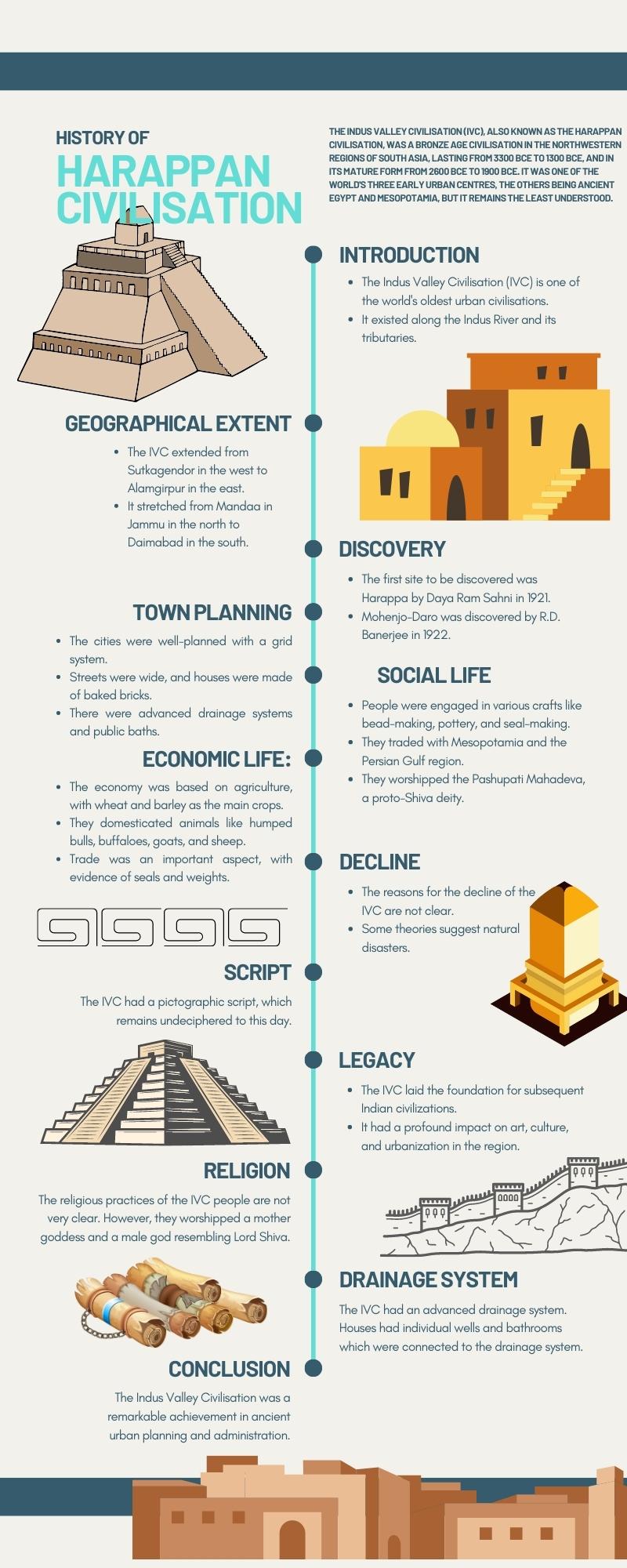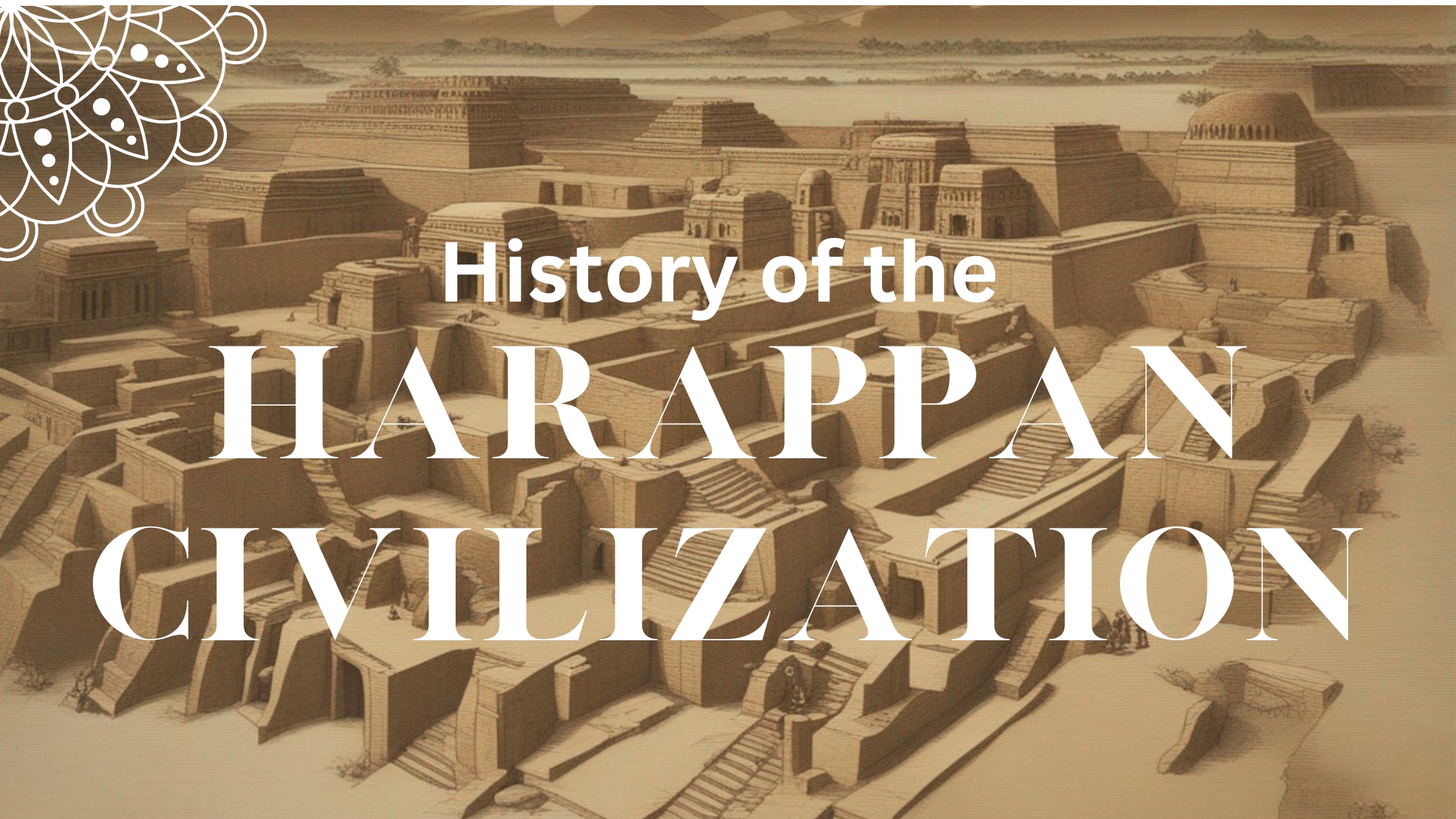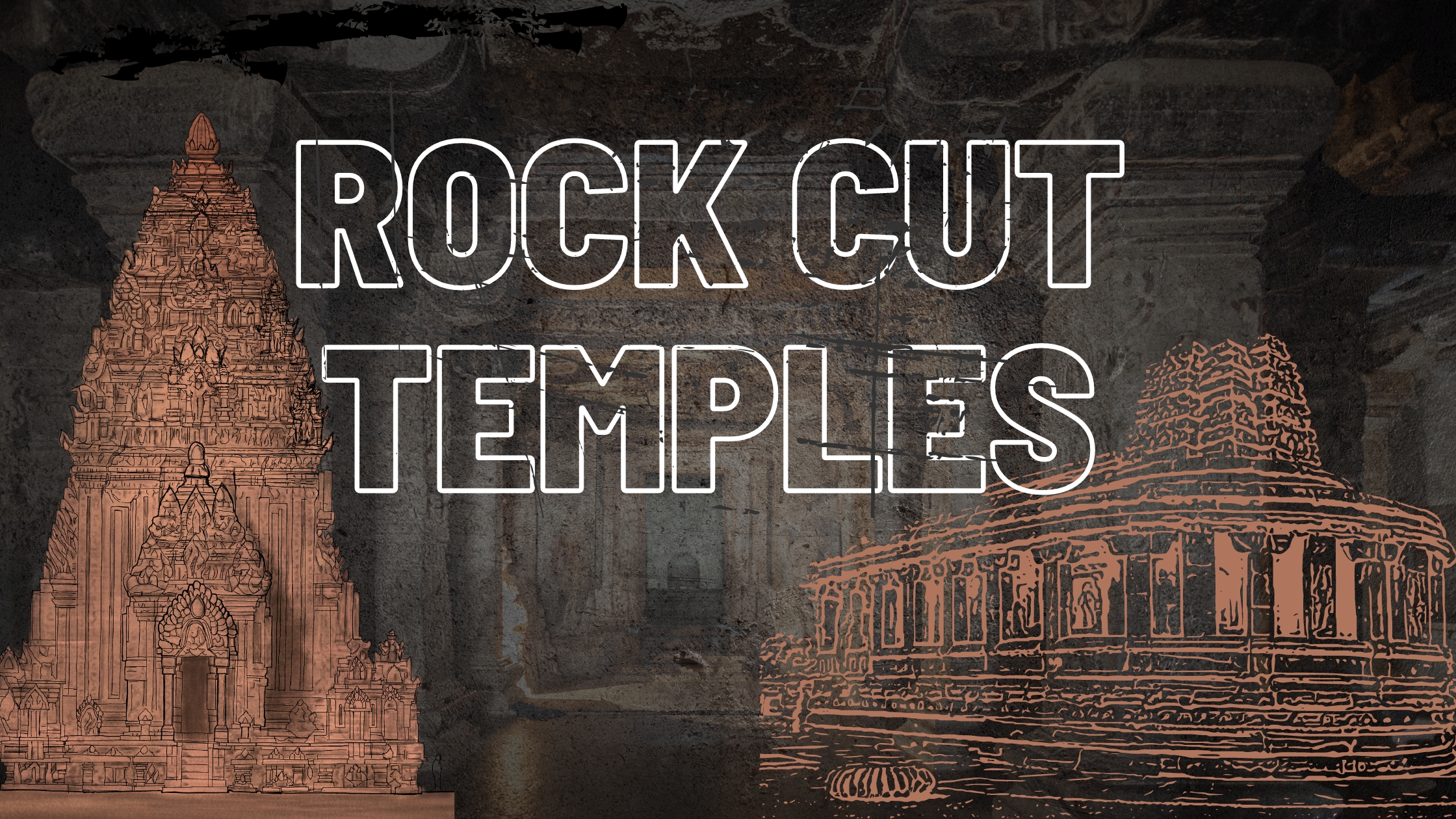
The Harappan Civilisation, also known as the Indus Valley Civilisation(Also known as Harappan Civilisation), stands as a testament to the advanced urban planning and architectural prowess of ancient societies. Flourishing around 2500 BCE, this civilisation extended from present-day northeast Afghanistan to Pakistan and northwest India. Let’s delve deep into its timeline and uncover the mysteries of this ancient civilisation.
Moreover, beyond its architectural marvels, the Harappan Civilisation was a hub of vibrant cultural practices, trade routes, and technological innovations. The uniformity in its city planning, the presence of advanced drainage systems, and the use of standardised weights and measures all point to a centralised form of governance and an organised societal structure.

Timeline of the Harappan Civilisation
1. Early Harappan Phase (3300 BCE – 2600 BCE)
- Rise of Regional Cultures: This period saw the emergence of distinct regional cultures, laying the foundation for the urban Harappan phase.
- Trade and Commerce: Trade routes began to form, connecting the Indus Valley with Central Asia and the Iranian plateau.
2. Mature Harappan Phase (2600 BCE – 1900 BCE)
- Urbanisation: The hallmark of this phase, cities like Mohenjo-Daro, Harappa, and Lothal emerged with advanced urban planning.
- Standardised Weights and Measures: A uniform system of weights and bricks was established, indicating a centralised authority.
- Script and Seals: The undeciphered Indus script came into existence, and seals with animal motifs became prevalent.
3. Late Harappan Phase (1900 BCE – 1300 BCE)
- Decline of Urban Center: Major cities began to decline, possibly due to ecological changes or invasions.
- Shift in Settlements: Populations moved towards the Ganges-Yamuna Doab, marking the beginning of the Vedic Age in India.
Key Features of the Harappan Civilisation
The Architectural Marvels of Harappan Cities
Initially, when one delves into the study of the Harappan Civilisation, it becomes evident that their cities were marvels of ancient urban planning. Characterised by their meticulous grid-like layout, these cities stood as a testament to the Harappans’ foresight and architectural prowess. Furthermore, they were surrounded by formidable fortified walls, which not only provided protection against potential invaders but also showcased the civilisation’s emphasis on security and order.
Moreover, the Harappan displayed an advanced understanding of sanitation and water management. Their cities were equipped with sophisticated drainage systems, ensuring that wastewater was efficiently channeled out, thereby maintaining hygiene and preventing water logging.
Art and Craftsmanship
The Harappan were skilled artisans. Their craftsmanship is evident in the intricate seals, terracotta figurines, and beaded jewellry they produced.
Agriculture and Diet
The fertile plains of the Indus River provided an ideal setting for agriculture. The Harappan cultivated wheat, barley, and pulses. They also consumed fish, meat, and dairy products.
Trade and Commerce
The Harappan established trade links with Mesopotamia, importing items like lapis lazuli and exporting their own goods, such as cotton.
The Enigma of the Harappan Decline
The reasons for the decline of the Harappan Civilisation remain a subject of debate among historians. Some theories suggest ecological changes, while others point to invasions or internal conflicts.
Conclusion

In essence, the Harappan Civilisation offers a fascinating glimpse into ancient urbanism, showcasing the ingenuity and adaptability of our ancestors. As we continue to unearth more about this civilisation, it serves as a reminder of the transient nature of human societies and the importance of preserving our history.
Topics You May Like
The Rock-Cut Temples of India: A Marvel of Ancient Architecture


